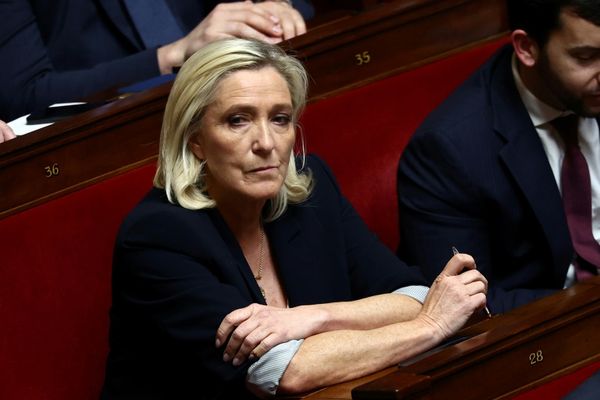
Cricket World Cup organisers said they were happy with the attendance at the tournament’s opening match between England and New Zealand despite the large expanses of empty seats in Ahmedabad that prompted a blend of criticism and derision from global onlookers. The England all-rounder Danielle Wyatt echoed the thoughts of many when she tweeted: “Where’s the crowd?”
Television viewers were greeted by the sight of tens of thousands of empty seats as fans shunned the exposed lower tier of the world’s second biggest sporting stadium on a baking hot October afternoon, and those with tickets elsewhere delayed their entry into the ground or decided to come only after the end of the working day.
The crowd grew through the day and, while organisers refused to confirm a final attendance, some 45,000 tickets had been sold, enough to make it the best-attended opening game of any 50-over World Cup, a figure that still barely made a dent in the 132,000-capacity Narendra Modi Stadium.
There were also some problems outside the ground, with those needing to collect their tickets – mainly foreign visitors who had been unable to supply an Indian address – being informed on arrival that the collection site was a hotel 20 minutes away.
The organisation of the World Cup has been criticised as chaotic, with the schedule finalised less than two months before the start of the tournament, and tickets going on sale only six weeks in advance. When England hosted the tournament in 2019 the final schedule was announced 13 months before its start, and tickets were sold out with more than six months to spare.
The decision to open the tournament with a fixture not involving the host nation on a weekday will be questioned, though organisers said there were strong reasons for doing so. They had faced many complicating factors in compiling the schedule, including the demand from the host broadcaster that all of India’s key fixtures should be played at weekends to maximise audiences – of their nine group games six will be played on either a Saturday or a Sunday including the first, the last, and their matches against Australia, Pakistan, England, New Zealand and South Africa.
But for the tournament to start with an India game on a weekend and finish as scheduled on 19 November would mean either extending it by an extra five days, or having several more than the current six days with multiple matches, making it difficult to give teams the time they need to travel between venues and recover between games. They hoped that starting the tournament in the same location as it will conclude, and with a rematch between the two sides who produced a thrilling final in 2019, would add to the interest in the game.
But that interest seemed lukewarm at best as a sparse scattering of spectators watched on as Sachin Tendulkar carried out the trophy before the start of play. The stands gradually filled during the afternoon – particularly the few shaded areas – but the areas most visible to international viewers, particularly low down behind the bowler’s arm at each end – where tickets were most expensive – remained poorly populated throughout.







